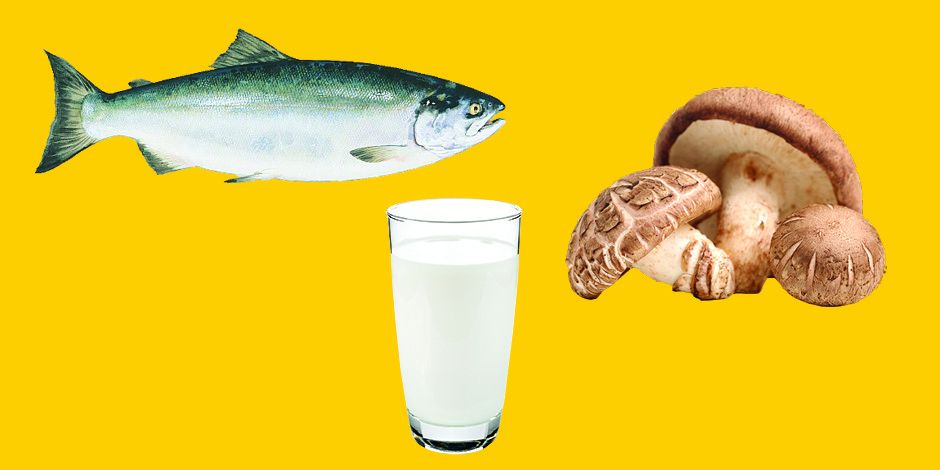The facts are simple: We need vitamin D, yet many of us have vitamin D deficiency. Sun exposure is our primary source of D, but studies show that even in sunny months a majority of Americans likely aren’t getting recommended levels (a minimum of 600 IU daily for most people). Vitamin D food sources are scarce, so you have to be strategic to get enough.
This health hero wards off both minor and major diseases like cancer and diabetes by strengthening your immune system. It also keeps bones and teeth strong by enabling calcium absorption, and regulates blood pressure. Here are your best bets from three different foods.
If you have an aversion to these, consider taking a vitamin D supplement such as D3 or cod liver oil. Check with the nutrition expert in your local store for suggestions.
Fish
Fatty fish, especially swordfish and salmon, is by far the best food source for vitamin D: 3 ounces of swordfish delivers about 560 IU, nearly your full daily D quota. The same portion of sockeye salmon contains about 450 IU, with canned tuna coming in at 150 IU. Vitamin D gets stored in your body’s fat, so you don’t have to eat fish daily; aim for about 6 ounces two or three times per week.
Fortified Dairy
In the 1930s, U.S. milk manufacturers began adding vitamin D to milk to reduce the occurrence of rickets, a bone disease, making it one of the best vitamin D food sources. It worked, and fortification is common to this day, with 1 cup of fortified milk providing about one-fifth of your daily needs. Opt for full-fat dairy; D is fat soluble, so the fat greatly improves vitamin absorption.
Mushrooms
Who knew that mushrooms and humans had something in common? We both manufacture vitamin D when we’re in the sun. If you can find a way to expose mushrooms to midday sunlight—even winter sun is adequate, studies show—for one to six hours, their vitamin D levels can shoot up to 25–100 percent of your daily needs per cup (depending on mushroom species and length of time in sun).

